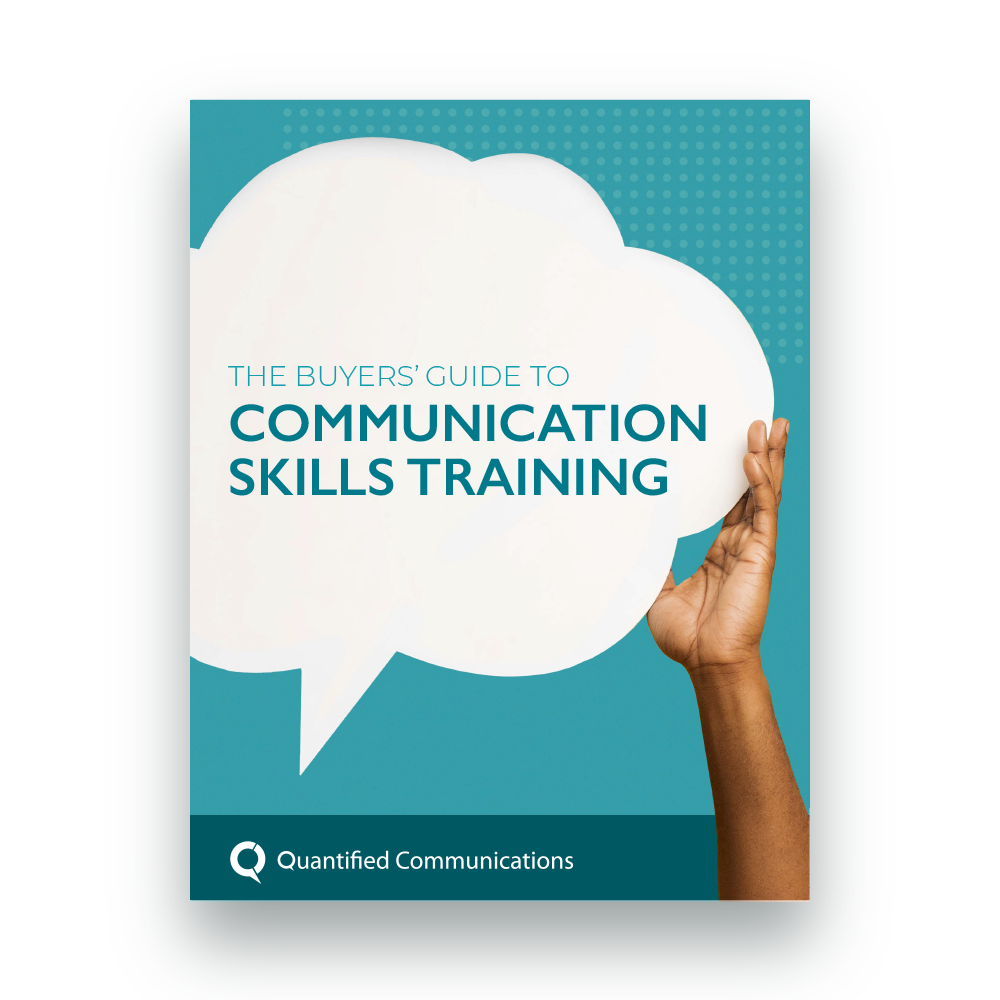Introducing the Buyers’ Guide to Communication Skills Training

 2020 saw a rapid, full-scale disruption of the way companies communicate, both internally and externally. We’ve witnessed many businesses achieve incredible pivots to continue serving their customers in new and valuable ways. But, there’s one critical skills gap that has widened with this transformation: communication.
2020 saw a rapid, full-scale disruption of the way companies communicate, both internally and externally. We’ve witnessed many businesses achieve incredible pivots to continue serving their customers in new and valuable ways. But, there’s one critical skills gap that has widened with this transformation: communication.
Before the COVID-19 pandemic emptied offices across the globe, a full two-thirds of talent development professionals cited communication and interpersonal skills as a key leadership gap. And now, as we strive to collaborate, learn, sell, motivate and connect with our communities remotely from our home offices, it’s harder than ever to establish the connections we need.
The right communication skills training can drive serious results. Many organizations are realizing they must find a better way to up the performance in this key area with training, but what’s the right solution? The hype and marketing and buzz out there can impede a careful selection process. That’s why we’re introducing this new buyers’ guide that’s designed to simplify the search, giving you the roadmap to find the communication skills development platform that will help your organization and its people meet — and exceed — every goal.
The buyer’s guide will take you through a five-step process:
1. Zero In On the Problem
“Communication skills” is an incredibly broad category on its own, so the first step to finding the right solution is identifying exactly what communication challenges your organization is looking to overcome.
We list the questions to ask in order to identify the key communication problems a platform needs to solve and goals it needs to support. Then, you’ll see how a Fortune 50 auto manufacturer narrowed down its key communication challenges in order to home in on the right solution.
2. Outline Your Requirements
Once you’re clear on the problem, you can start getting specific about what features and characteristics you need. We start you off with five requirements to consider as you evaluate skills training platforms, and we’ll walk through how to identify the KPIs you’ll use to measure success. You’ll learn how a global technology giant created a clear list of requirements in order to find an effective, scalable platform for their 150,000+ workforce.
3. Assess Your Options
With a clearly defined problem and a solid list of requirements, you’ll find it much easier to narrow down the choices into a short list of viable options. Our buyer’s checklist will help ensure the solutions on your shortlist match your organization’s requirements and meet your employees’ needs.
4. Select a Solution
Compare your short list against your requirements, schedule demos, and speak with both the sales teams and the actual customers of the solutions you’re considering to identify out which of these solutions is the best fit for your particular problems. Several of the options on the short list may check all your boxes, so we’ll show you how to dig deeper, vet references, and consider what happens after you sign on the dotted line.
5. Create an Implementation Plan
Finally, a careful implementation plan and thoughtful rollout will help ensure users are ready and eager to take full advantage of the new offering. After all, even the most perfect training plan can be ineffective if it’s not implemented effectively. While those early conversations with users about requirements should have facilitated their buy-in and enthusiasm, we’ll highlight the additional steps you’ll need to take to ensure users take ownership, engage fully, and maximize the benefits of the new program.
Communication is a broad category with a bustling training market. Every organization’s communication skills needs will vary based on size, industry, unique challenges, and particular goals. But if one thing is consistent, it’s that selecting communication skills training doesn’t have to be a shot in the dark. With a little planning and a lot of homework, every organization can select and implement the program that drives success for each individual and for the company as a whole. Our new buyers’ guide makes it simple.